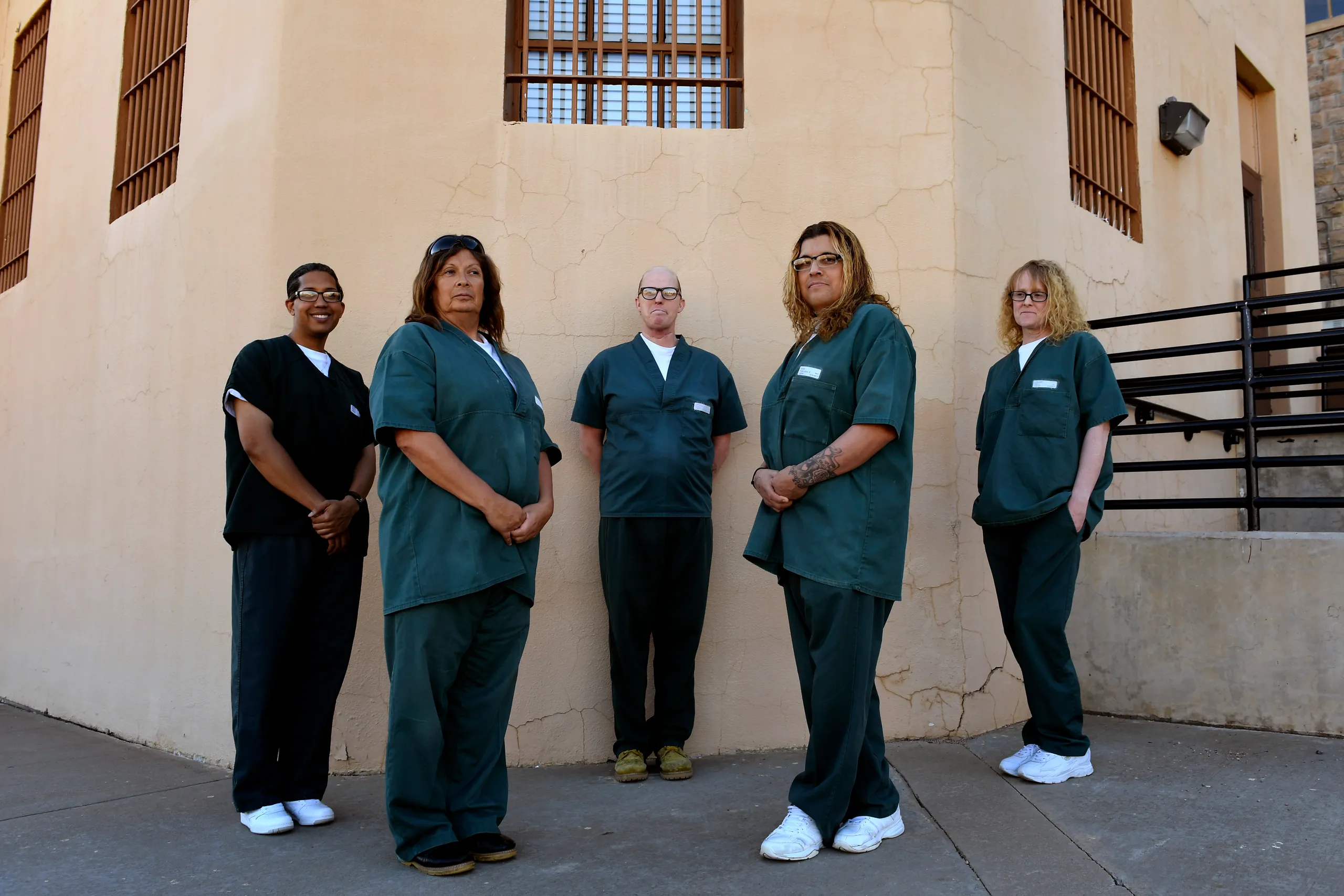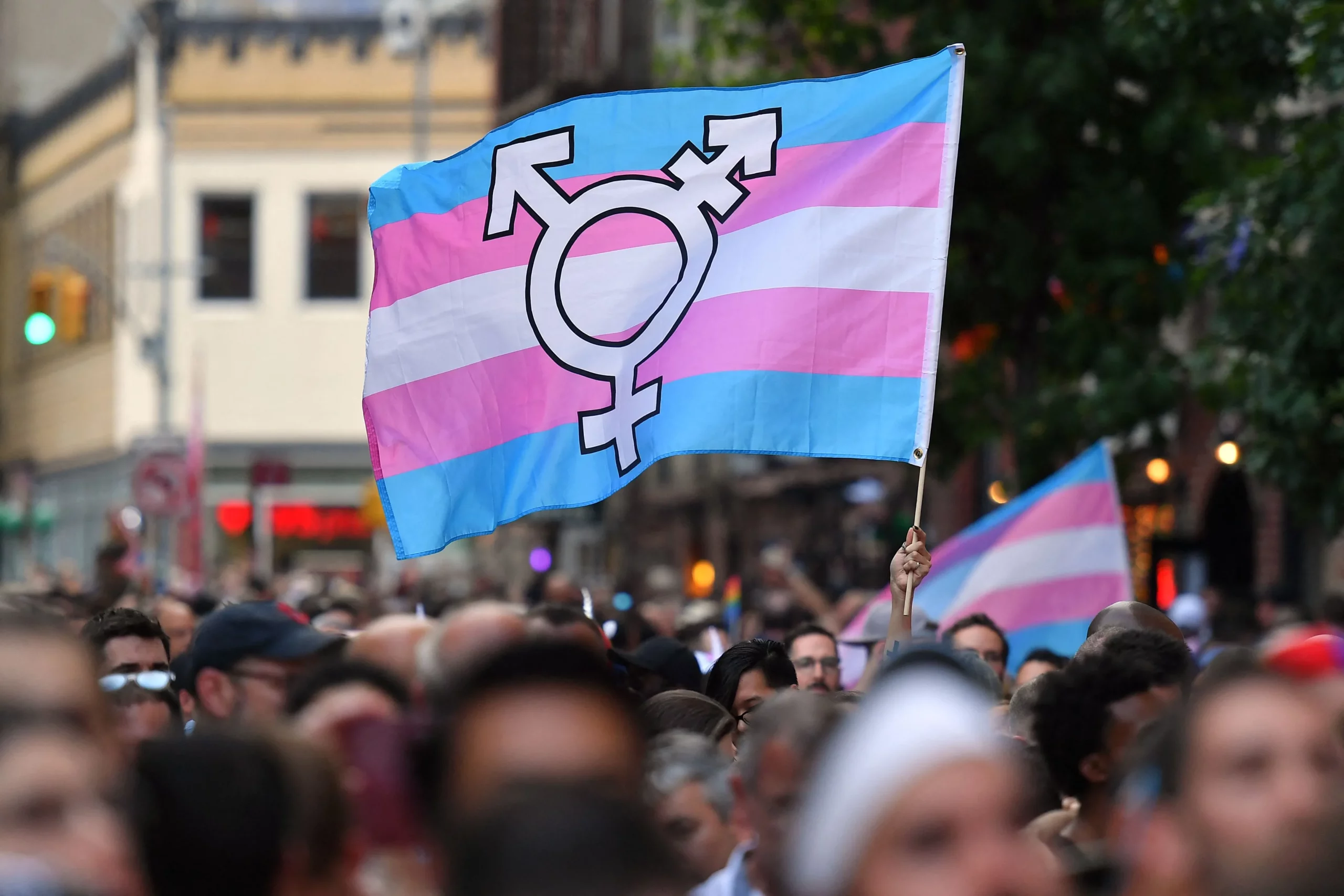The housing of transgender inmates in the United States correctional facilities is a complex issue that requires an understanding of the system and its policies. With recent changes in protections for transgender prisoners and growing awareness of their unique needs, it is important to address where these individuals are housed and the impact it has on their well-being.
Under the Trump administration, the use of biological sex as the initial determination for housing transgender inmates was implemented, reversing the previous recommendation based on gender identity. However, the recent case involving a transgender leader of an anti-government militia has reignited the discussion, leading to a review of policies by the Justice Department.
The Transgender Executive Council, consisting of psychology and correctional officials, plays a significant role in determining the housing arrangements for transgender inmates in the federal prison system. Currently, there are approximately 1,200 inmates who identify as transgender in the federal prison system.
Without access to gender-affirming care, transgender inmates can face serious mental health challenges, including anxiety, depression, and thoughts of suicide. Many have had to fight legal battles to obtain proper medical care while incarcerated. Civil rights groups, such as the American Civil Liberties Union (ACLU) and Lambda Legal, have been actively involved in advocating for the rights of transgender inmates to receive gender-affirming medical care.
Internationally, countries have taken different approaches to housing transgender prisoners. Some have established special units or wards within prisons specifically for transgender inmates, while others have implemented sex-based placement, identity-based placement, or segregation. The ongoing debate centers on finding the most effective and inclusive approach that prioritizes the safety and well-being of transgender prisoners.

It is crucial to make housing decisions for transgender inmates on an individual basis, taking into consideration their specific needs and safety concerns. This approach acknowledges the unique challenges faced by transgender inmates in a “hyper-gendered” prison environment and aims to ensure their comfort and security.
Improved policies and guidelines are necessary to protect the rights and safety of transgender inmates. These should center around respecting self-identified gender without unnecessary legal or medical requirements. Collaboration among nations, through comparative research and the sharing of best practices, could help establish universal recommendations for the safe management of transgender prisoners.
In conclusion, the housing of transgender inmates within the United States correctional system requires careful consideration and proactive measures. By understanding the system and its policies, we can work towards creating a more inclusive and compassionate environment that prioritizes the well-being and rights of incarcerated transgender individuals.
The Importance of Housing for Transgender Inmates
Providing proper housing for transgender inmates is crucial for their overall well-being and ensuring their rights are protected. Transgender individuals in prison face unique challenges due to the “hyper-gendered” environment of correctional facilities. Inadequate housing can have severe consequences on their mental health and safety.
Transgender inmates who do not receive gender-affirming care in prison often experience heightened levels of anxiety, depression, and suicidal ideation. Access to proper medical care is essential, but many transgender prisoners have had to fight legal battles to receive the necessary treatment. Civil rights groups, such as the American Civil Liberties Union (ACLU) and Lambda Legal, have been pivotal in advocating for transgender inmates’ rights to gender-affirming medical care.
The approach to housing transgender prisoners varies across different countries, with options such as sex-based placement, identity-based placement, segregation, or special wards. Some countries, like Italy and England, have established specialized units within prisons for transgender inmates. However, there is an ongoing debate about the most effective approach to housing. It is crucial to make housing decisions on an individual basis, considering the specific needs and safety concerns of transgender prisoners.

Efforts should be made to question the necessity of detention for transgender individuals, given the elevated risk of mistreatment and the additional burden of time spent in prison. Improved policies and guidelines are needed to ensure the protection and safety of transgender inmates. The focus should be on respecting self-identified gender without unnecessary legal or medical requirements, and promoting a safe and inclusive environment within correctional facilities.
| Key Points: |
|---|
| Transgender inmates require proper housing for their overall well-being and rights protection. |
| Lack of gender-affirming care in prison can lead to mental health issues. |
| Housing decisions for transgender inmates vary by country. |
| Individualized housing decisions are crucial, considering the specific needs and safety concerns of transgender prisoners. |
| Improved policies and guidelines are necessary to ensure the safety and well-being of transgender inmates. |
Challenges Faced by Transgender Inmates in Prison
Transgender inmates encounter numerous challenges in the prison system, such as restricted access to healthcare and infringements on their basic rights. These challenges contribute to a hostile and unsafe environment for transgender prisoners, impacting their physical and mental well-being.
One of the most pressing challenges faced by transgender inmates is the lack of access to gender-affirming healthcare. Many prisons fail to provide necessary medical treatments and procedures, such as hormone replacement therapy or gender-affirming surgeries. This denial of healthcare not only infringes on the rights of transgender prisoners but also exacerbates the gender dysphoria they may experience, leading to significant mental health issues.
Another challenge is the violation of transgender inmates’ basic rights. Many prisons have policies and practices that misgender and misidentify transgender individuals, leading to their humiliation and degradation. This not only erodes their sense of self-worth but also exposes them to increased risk of harassment, violence, and sexual assault. Additionally, transgender prisoners often face discrimination and isolation from both fellow inmates and prison staff, further isolating them from essential support networks.
| Challenges Faced by Transgender Inmates | Impact |
|---|---|
| Limited access to gender-affirming healthcare | Contributes to mental health issues and exacerbates gender dysphoria |
| Violation of basic rights | Increases risk of harassment, violence, and sexual assault |
| Discrimination and isolation | Leads to feelings of exclusion and lack of support |
Efforts have been made by civil rights groups and advocacy organizations to address these challenges and improve the conditions for transgender inmates. Legal actions have been taken to challenge discriminatory policies and ensure access to gender-affirming care. It is crucial for prisons to adopt inclusive policies that recognize and respect the gender identity of transgender inmates, providing necessary healthcare and protection from harm.
Ultimately, the goal should be to create a prison environment that prioritizes the safety, well-being, and human rights of all individuals, including transgender inmates. This requires a shift in attitudes, increased awareness, and ongoing advocacy to bring about meaningful change. By addressing the challenges faced by transgender inmates, we can work towards a more inclusive and equitable prison system that values the dignity of all individuals.
International Approaches to Housing Transgender Prisoners
Different countries employ varying strategies when it comes to housing transgender prisoners, ranging from specific units within prisons to segregated wards. These approaches reflect the ongoing debate surrounding the best way to accommodate the unique needs of transgender inmates.
In some countries, such as Italy and England, special units have been established within prisons to house transgender prisoners. These units aim to provide a safe and inclusive environment for transgender individuals, allowing them to exist in a space that acknowledges and respects their gender identity. By creating separate units, these countries recognize the challenges faced by transgender inmates and work towards addressing them.

Other countries opt for a system of segregation, placing transgender prisoners in separate wards away from the general population. While this approach aims to ensure the safety of transgender inmates, it may also further isolate and stigmatize them. The effectiveness of this strategy in terms of providing a supportive and inclusive environment remains a subject of debate.
When making housing decisions for transgender inmates, it is essential to consider their individual needs and safety concerns. This includes conducting thorough risk assessments to determine the most appropriate housing arrangement. By taking a case-by-case approach and acknowledging the unique circumstances of each transgender prisoner, the justice system can better address their specific needs and provide a more compassionate and equitable environment.
In order to establish universal recommendations for the safe management of transgender prisoners, collaboration and comparative research among nations are essential. By sharing best practices and insights, countries can work towards creating a more standardized approach to housing transgender inmates. This collaboration should prioritize the protection of vulnerable individuals and strive to create a safe and inclusive environment within correctional facilities.
| Country | Approach to Housing Transgender Prisoners |
|---|---|
| Italy | Establishment of special units within prisons |
| England | Creation of specialized units within prisons |
| Other countries | Segregation in separate wards |
Different countries employ varying strategies when it comes to the housing of transgender prisoners. By exploring and evaluating these approaches, we can work towards creating a more inclusive and supportive environment for transgender individuals within the prison system.
References:
- Bhattacharya, S. (2021). Transgender Prisoners and the Carceral State: A Feminist Examination. Signs: Journal of Women in Culture and Society, 47(2), 401-425. doi:10.1086/713750
- Verrecchia, R., & Prat, A. (2020). Transgender People in Prisons and Detention Centers: International Human Rights Standards, Comparative Practices, and Innovative Strategies to Ensure Equal Treatment. International Journal of Transgender Health, 21(4), 291-306. doi:10.1080/15532739.2020.1824627
Individualized Housing Decisions for Transgender Inmates
Housing decisions for transgender inmates should be tailored to their unique circumstances, considering factors such as safety and individual risk assessments. It is crucial to create an environment that respects and supports the gender identity of transgender prisoners while ensuring their safety within the correctional system.
One approach that has been suggested is the use of gender identity as the primary factor in determining housing placement. This would align with recommendations from organizations such as the American Psychological Association (APA) and the National Commission on Correctional Health Care (NCCHC), which emphasize the importance of affirming a person’s self-identified gender.
However, there are also arguments in favor of conducting individual risk assessments as part of the housing decision-making process. These assessments would take into account various factors, including the prisoner’s personal safety concerns and any potential risks associated with housing them in certain facilities. By considering these individualized factors, correctional officials can make more informed decisions that prioritize the well-being of transgender inmates.
To ensure the fair and unbiased assessment of transgender inmates, it is crucial that these risk assessments are conducted by knowledgeable and culturally competent professionals who understand the unique challenges faced by transgender individuals in the prison system. This would require appropriate training and education for correctional staff members to ensure they have the necessary understanding and sensitivity when dealing with transgender prisoners.
| Advantages of Individualized Housing Decisions | Disadvantages of Individualized Housing Decisions |
|---|---|
|
|
Conclusion:
Creating individualized housing decisions for transgender inmates is vital in ensuring their well-being and safety within the correctional system. By considering factors such as safety and conducting individual risk assessments, correctional officials can make informed decisions that respect and affirm the self-identified gender of transgender prisoners. However, it is essential that these assessments are conducted by trained professionals who understand the unique challenges faced by transgender individuals. Ultimately, the goal should be to provide a safe and inclusive environment for all prisoners, regardless of their gender identity.
The Need for Improved Policies and Guidelines
To ensure the well-being and safety of transgender inmates, it is essential to implement improved policies and guidelines that prioritize self-identified gender and eliminate unnecessary requirements. The Justice Department in the United States is currently reviewing its policies on housing transgender inmates, as protections for this vulnerable population were rolled back during the previous administration. The Transgender Executive Council, composed of psychology and correctional officials, plays a crucial role in determining where transgender inmates are housed in the federal prison system.
Under the Obama administration, the council was advised to recommend housing based on gender identity. However, the Trump administration changed this policy to require the use of biological sex as the initial determination. This shift had significant implications for transgender inmates, as it often resulted in their placement in facilities that did not align with their gender identity. Approximately 1,200 inmates in the federal prison system identify as transgender, highlighting the importance of fair and inclusive housing policies.

One of the key challenges faced by transgender inmates is the lack of access to gender-affirming healthcare. Without proper medical care, transgender prisoners can experience severe mental health issues, including anxiety, depression, and suicidal ideation. Civil rights groups, such as the American Civil Liberties Union (ACLU) and Lambda Legal, have been actively involved in lawsuits advocating for transgender inmates’ rights to receive gender-affirming medical care while incarcerated.
When it comes to housing decisions for transgender prisoners, different countries employ various approaches, including sex-based placement, identity-based placement, segregation, or the establishment of special units within prisons. For example, Italy and England have created specific units to house transgender prisoners, recognizing the unique needs and challenges they face. However, there is an ongoing debate regarding the most effective approach to housing transgender inmates.
True progress can only be achieved by making housing decisions on an individual, case-by-case basis, taking into account the specific needs and safety concerns of transgender prisoners. It is crucial to question the necessity of detention for transgender individuals, considering the heightened risk of mistreatment and the added burdens they face during their time in prison. By prioritizing the protection and well-being of transgender inmates, and by implementing improved policies and guidelines that respect self-identified gender, the prison system can begin to provide a safe and inclusive environment for all individuals.
| Key Points: |
|---|
| Improved policies and guidelines are necessary to prioritize self-identified gender and eliminate unnecessary requirements for transgender inmates. |
| The Justice Department in the United States is reviewing its policies on housing transgender inmates. |
| Access to gender-affirming healthcare is often limited for transgender prisoners, leading to serious mental health issues. |
| Housing decisions for transgender inmates vary by country, with some nations establishing special units within prisons. |
| It is crucial to make individualized housing decisions and question the necessity of detention for transgender individuals. |
Achieving Universal Recommendations for Transgender Prisoners
By conducting comparative research and fostering collaboration among nations, there is a possibility to establish universal recommendations for the safe management of transgender prisoners. This approach would help ensure that transgender individuals in correctional facilities around the world receive fair and equal treatment, as well as appropriate housing and support.
One key aspect of achieving universal recommendations is the sharing of best practices and experiences among countries. Each nation has its own unique approach to housing transgender inmates, ranging from sex-based placement to identity-based placement, segregation, and special wards. Italy and England, for example, have established special units within prisons dedicated to transgender prisoners.
However, the ongoing debate surrounding the best approach to housing transgender inmates demonstrates the need for cross-national discussions and collaboration. By learning from each other’s successes and challenges, nations can work towards a consensus on the most effective and inclusive way to house transgender prisoners.
The ultimate goal is to ensure that housing decisions for transgender inmates are made on an individual basis, taking into account their specific needs and safety concerns. This requires a thorough risk assessment process that considers factors such as the inmate’s self-identified gender, mental health, and history of violence or victimization.
| Benefits of Achieving Universal Recommendations |
|---|
| 1. Equality and Fair Treatment: Universal recommendations would promote equality and fair treatment of transgender prisoners, regardless of their location. |
| 2. Improved Mental Health: Proper housing accommodations can significantly improve the mental health and well-being of transgender inmates, reducing the risk of anxiety, depression, and suicidal ideation. |
| 3. Enhanced Safety: By considering individual needs and safety concerns, universal recommendations can help create a safer environment for transgender inmates, reducing the risk of violence and harassment. |
| 4. Reduced Legal Battles: Clear and consistent guidelines would minimize legal battles and ensure that transgender prisoners have access to necessary medical care and support. |
The Way Forward
Establishing universal recommendations for the safe management of transgender prisoners requires a collective effort from governments, correctional officials, and human rights organizations. Comparative research, collaboration, and continued advocacy play crucial roles in driving positive change and making progress towards a more inclusive and compassionate prison system.
Conclusion
In conclusion, addressing the housing and rights of transgender inmates is crucial for promoting a fair and inclusive prison system that ensures their safety and respects their identities. The recent review of policies by the Justice Department reflects the importance of this issue, as protections for transgender prisoners were rolled back during the previous administration. The Transgender Executive Council, consisting of psychology and correctional officials, plays a pivotal role in determining where transgender inmates are housed in the federal prison system.
It is vital to prioritize the mental health and well-being of transgender inmates by providing them with gender-affirming care. Without proper medical and psychological support, transgender prisoners may experience anxiety, depression, and even thoughts of suicide. Civil rights groups, such as the American Civil Liberties Union (ACLU) and Lambda Legal, have been instrumental in advocating for gender-affirming medical care and have been involved in lawsuits on behalf of transgender inmates.
Effective housing decisions for transgender prisoners require a case-by-case approach that takes into account individual needs and safety concerns. While some countries have established special units or wards within prisons for transgender inmates, there is ongoing debate surrounding the best approach to housing. The focus should be on ensuring that transgender prisoners can live safely and comfortably in their gender identities, while also questioning the necessity of detention for transgender individuals.
To achieve better policies and guidelines, it is crucial to promote comparative research and collaboration among nations. By sharing knowledge and experience, it is possible to establish universal recommendations for the safe management of transgender prisoners. This collaborative effort will help protect the vulnerable and create a prison environment that is safe, inclusive, and respectful of transgender individuals.